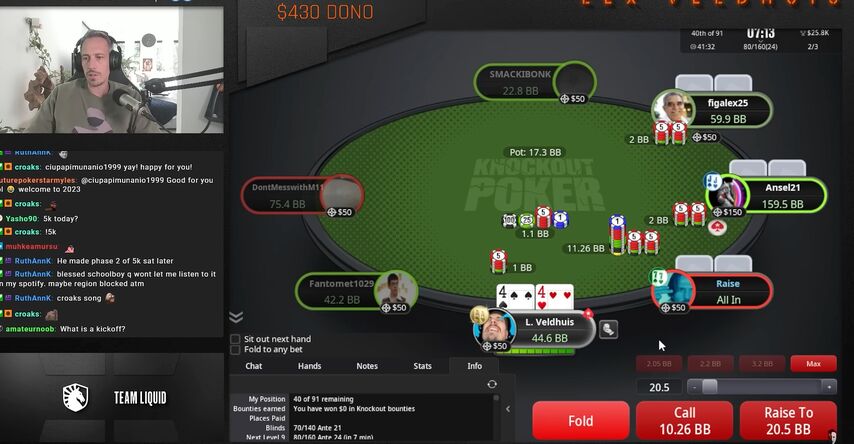If you’ve ever asked, “What does limp mean in poker?”, this article has the answer.
When a player limps into the pot in poker games, that means they called the big blind amount during the preflop round. This move gets a player into the hand with the absolute minimum level of aggression and minimum cost.

Outside of the poker world, the term limping means walking forward with difficulty, without strength. That definition is very similar to what limping means in poker – moving into the pot without strength and displaying some weakness.
Most poker players don’t consider limping to be a viable strategy, but there’s some debate about that.
What is a Limp in Poker?
Let’s take a closer look at the meaning of the term “limp”.
When you call preflop, instead of raising, you’ve limped into the pot. If the blinds are $5/$10, then a player needs to put in $10 to limp in.
Since you are putting in the minimum possible amount to continue, it doesn’t make your hand range look very strong. By paying just 1 bb to enter the pot, it doesn’t look like you are confident in your hand. If you were, then a raise would make more sense.

Limping can encourage other players to enter the pot by limping or to raise the perceived weakness of limpers. It’s more common to see limping in low-stakes cash games, where the strategies are less advanced and players might not understand limping.
To be clear – you want to be in those kinds of low-stakes online cash games because it can help your win rate.
- Increased first deposit bonus
- Increased rakeback and reloads
- Help with deposits and cashouts
- Access to private freerolls
- Round-the-clock support
Should You Limp or Open Raise in Poker Games?
You shouldn’t limp in poker, at least not in most situations.
Limpers feel they are saving money by seeing lots of flops for cheap, but that's not really what is happening. In reality, they will often get forced out of the pot and slowly bleed chips, instead of making focused plays.
Here are the main reasons we strongly advise against limping:
Limping creates multi-way pots, meaning you will have very low equity. The more players you face, the lower the odds are that your hand will come out on top.

Limpers are constantly targeted by raises, but it will be difficult to know the raiser’s ranges when you limp. Are you being targeted because limping appears weak or because your opponent has a strong hand?
Players who limp rarely get full value. Many limpers aren’t balancing their range properly, so when they bet, they aren’t bluffing enough. This can allow opponents to escape if the limper makes a hand, which stops them from building large pots.
Limping “caps” your range, meaning that you can’t or won’t have the strongest poker hands. If you limp and the flop comes A♥ 9♣ J♥, the limper is very unlikely to have A-A or J-J (because they would have raised preflop). Good players will exploit this capped range using their range advantage.
In MTTs, limping can be more acceptable if you get the chance to see a cheap flop. If you’re a tournament poker player, why not check out the Daily Legends Series at partypoker? These events have some of the best prize-to-buy-in ratios in online poker, plus, we can help you start your bankroll with a few bonuses.
When is it Okay to Limp?
Sometimes it can be a good idea to limp, but it usually isn’t. Let’s look at a few rare occasions that could be perfect for a limp.
The limp-raise can be a great strategy if you understand the dynamics of your table. By limping, you might make an opponent raise you, giving you the option to 3-bet them. Players sometimes do this with premium hands or their full 3-bet range, but there’s a downside. If you limp, you might get 5 callers behind you, which is bad news if you have a very strong hand.
Completing from the small blind position is fine to do most of the time. It’s technically limping, but you only need to put in ½ a blind to see a flop.

Limping to induce a shove can win you chips in tournaments and cash games. Instead of raising to enter the pot, you could feign weakness with a limp, hoping that a short-stacked opponent moves all in. It’s more useful in tournaments because players can have small stacks like 10 bb or 15 bb, but in cash games, players usually rebuy.
If you want to practice limping, look no further than our freeroll schedule. Some events have cash prizes and some offer bigger tournament tickets, but they’re all free to play.
























